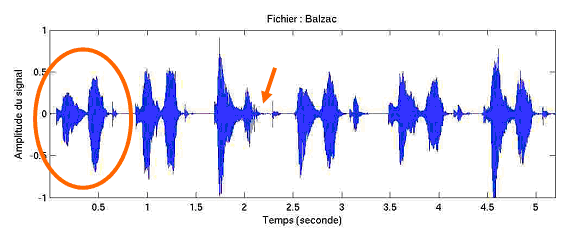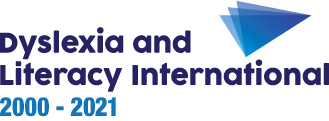Pages in Section 1
Why is reading so difficult for children with dyslexia?
Most researchers agree that the majority of learners with dyslexia display a core phonological deficit. These learners have significant difficulties in developing phonological awareness and phonemic awareness in particular.
In other words, children with dyslexia encounter difficulties in learning to analyze spoken words into ‘sounds’ and then to build accurate and precise representations of these sounds in the brain.
Consequently, they will have difficulties in mapping the ‘letters’ of the written words to their corresponding ‘sounds’ in order to establish the decoding system for the conversion of written words into spoken words. In turn, this will impede their development of complete and organized phonological and orthographic representations of words which is necessary to build the system for direct access.
As a result, they will be weaker than children without dyslexia at developing mechanisms for identifying words automatically, that is quickly and accurately, and therefore at comprehending sentences and texts adequately and fast enough.
Why do most children with dyslexia have major difficulties in developing precise representations of the ‘sounds’ of their language(s)?
As mentioned earlier, the identification of sounds in spoken words, and their mapping to ‘letters’ for reading and spelling, go well beyond simple perception. It requires the establishment and use of abstract representations which allow us to recognize these sounds in spite of their actual slight variations (in terms of voice, accent, context, etc.), and letters in spite of their actual slight variations (font, case, style, etc.).
We have mentioned that speech varies depending on the voice, the accent or the speed of the talker, because each word and sound varies slightly depending on the context in which they are pronounced. But there are even more sources of variability in speech which relate to the intrinsic properties of the human vocal tract.
When we pronounce a word or a sentence, we expel a continuous flow of air through our throat and mouth. For each sound of the word or sentence our articulators (tongue, teeth and lips) will assume a specific position and our vocal cords will either vibrate or not. From one sound to the next, each of these articulators will change their position slightly, but the flow of air through our throat and mouth will not be interrupted. In other words, each sound that we pronounce overlaps partially with the previous sound as well as with the next one.
Hence, contrary to our impression, spoken words are not a series of sounds which are articulated one after the other and which are separated by silence, but amalgams of sounds which are articulated together and which therefore overlap each other to a greater or lesser extent. This phenomenon is referred to as co-articulation.
To picture this, open the palms of both hands facing you and interweave your fingers as if making a basket. The sounds of words arrive like that in our ears and it is we who ‘unclasp’ them unconsciously in order to identify each of them.
A famous linguist used the analogy of an omelet, saying that spoken words are like scrambled eggs. The original unbroken eggs that make up the omelet, that is the ‘sounds’ that make up the words, are not produced by the mouth of the speaker but are reconstituted within the brain of the listener.
This happens unconsciously and extremely quickly through the connection of the acoustic information coming from the ears to the internal representations of the sounds of the language. That is, the continuous flow of acoustic information displays a succession of ‘lists’ of acoustic characteristics, each of which activates the corresponding ‘list’ of characteristics, or representations, of the sounds.
Hence, even though this contradicts our impressions, ‘sounds’ do not exist physically in speech. They exist in the heads of listeners as the abstract representations of the sounds of speech.
Research suggests that many children with dyslexia are oversensitive to the variability of speech, which would impede them in building sufficiently abstract and precise representations of speech ‘sounds’. Some researchers say that many children with dyslexia can only develop fuzzy representations of the sounds of their language. Putting it another way, they do not seem to be able to ignore the variability in order to encode a generalised entity to represent the sound.
If ‘sounds’ do not exist physically in speech then, logically, it is not easy to count them. To see how difficult this can be even for a good reader like yourself, try the next activity.
ACTIVITY 2
According to you, how many phonemes are there in each of these words?
< cat >
< symbol >
< chimney >
< unite >
< untie >
< knight >
< through >
< government >
< necessary >
< rich >
< pitch >
< boxer >
< cat > 3
< symbol > 6
< chimney > 5
< unite > 4
< untie > 4
< knight > 3
< through > 3
< government > 9
< necessary > 7 or 8
< rich > 3
< pitch > 3
< boxer > 5
You probably did not have too much trouble with < symbol > and < chimney >. In the case of < knight > and < pitch > you may not have been able to prevent yourself from being influenced by the spelling and so you arrived at too many “sounds”. For < boxer > you may have made the opposite mistake, not realizing that, unusually, “x” represents two sounds, namely [ k ] and [ s ]. In the case of < government > you may have counted 10 but few people would say the first “n”. In < necessary > the “a” may be “swallowed” or not.
This exercise aimed at illustrating how the sounds of words are ambiguous, hence our over-reliance on how they are represented, that is on their spelling, to analyze them into sounds.
If you are still not convinced that isolated ‘sounds’ do not exist physically in speech, read the following collapsed topic “Measuring air flow vibrations”
There is an instrument which measures the vibrations produced by the flow of air expelled through the vocal tract, which gives graphic “transcripts” of what is pronounced. These are called spectrograms.
For example, the spectrogram below represents the vowel [ a ] pronounced very briefly in isolation. The X axis represents milliseconds and the Y axis represents changes in frequency. The air will go through the vocal tract and make its cords vibrate, and then through the mouth in which the articulators (tongue, teeth and lips) will have a specific position. This will result in a particular vibration of the air, transcribed into a specific shape on the spectrogram.

The next spectrogram transcribes the vibration of the air produced by saying the same word, “Balzac” (the French author), six times in six different sentences by the same speaker in the same meeting. The first instance of the word is circled in orange.

You can see that there are no pauses, i.e. no stretches of flat line, between the constitutive sounds of each repeated word, except between the [ a ] and the final [ k ], as you can see most clearly in the third instance under the orange arrow. Note however that this silence is not perceived as such but as a part of the sound [ k ]. (When we utter the sounds [ p ], [ t ], or [ k ], we actually utter a piece of silence followed by an explosion, i.e. we accumulate air in the mouth and then suddenly open the mouth to release the air – the silence is actually part of the “sound” and, if it is removed, the sound is not recognized.)
In any case, it is impossible to determine when one sound finishes and the next one starts, because the beginning of each sound overlaps with the end of the previous one and its own end overlaps with the beginning of the next one. This is referred to as co-articulation.
Moreover, you can see that there are sometimes big variations across the six instances of this word, even though they were said by the same person during the same meeting. This is because the characteristics of each instance of the word vary slightly depending of the context. For example, it is likely that the third and the sixth instances started new sentences because, as you can see, the beginnings of these two instances were produced with more energy (i.e. have a higher amplitude) than the others.
In short, the same word is never pronounced twice exactly in the same way, even by the same person. There are even more variations between instances of the same “sound” across different words. For example, the sound [ b ] is not produced in exactly the same way in [ bat ] and [ table ] because the sounds which follow and/or precede [ b ] overlay it.
We learn to discount these variations because they have no bearing on the meaning. They are called allophonic variations and the phenomenon itself is called allophony.
As we said, some learners with dyslexia are oversensitive to co-articulation and to allophonic variation. Consequently they could be building fuzzy representations of the “sounds” of the language.
(See for example the studies of Serniclaes, Van Heghe, Mousty, Carré & Sprenger-Charolles, and of Sprenger-Charolles & Serniclaes – the full references are cited in Sources at the end of the Section.)
From this we can see that isolated ‘sounds’ do not exist physically in the spoken words we hear.
What we hear are mixtures of sounds which overlap each other, are not separated by pauses, and which display different acoustic characteristics across different words or even across different instances of the same word. Even so, we have the impression of hearing stable units which follow each other separated by pauses.
This impression comes from the fact that inside our brain we are unconsciously and instantly processing the amalgams of sounds that are coming through our ears in order to reconstitute the sequences of ‘sounds’ they correspond to. We do this by connecting the acoustic information to our internal abstract representations of the sounds of the language.
Therefore ‘sounds’ need to be taught explicitly and systematically, especially to children with dyslexia, who have difficulties in building accurate and precise abstract representations of speech.


